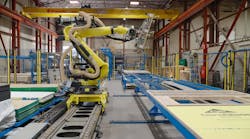Every building manager should be striving for energy efficiency. Not only does going green help save the environment, it saves money, something every manager and owner should love. However, not every building manager knows where excess energy can escape from their building.
As Lisa Foderaro wrote in The New York Times, one way energy can escape with which many may not expect is through elevator shafts. In fact, a recent study found that the amount of warm air lost from elevators in 4,000 New York multifamily buildings could fill 29,000 Empire State Buildings.
“It’s hard to open doors in winter because there’s negative pressure,” said Russell Unger, executive director of Urban Green Council, the New York chapter of the United States Green Building Council, which released a study Tuesday night about preventing heat loss in city buildings. “Doors don’t naturally whistle. It’s a sign of a building leaking a lot of heat.”
The science is simple: Heat is continuously being lost through leaks in buildings, especially out of the tops of elevator shafts. Then, as a lobby door is opened, cold air rushes in and must be heated. The process repeats each time the door is opened.
How much energy leaves your building through the energy shaft? Is this something you have considered? Let us know in the comments or visit HPAC Engineering’s Facebook page to join the discussion.












